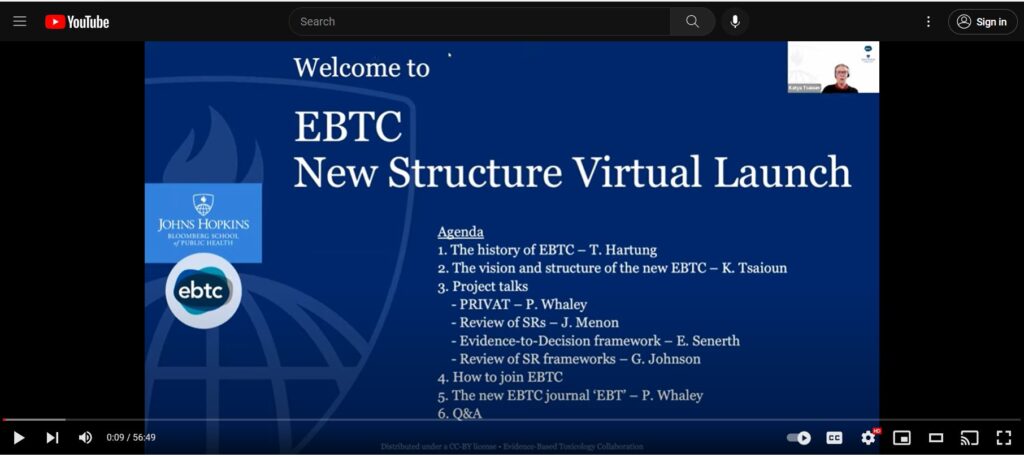Technical Work to Improve the Scientific Basis of Environmental and Human Health Risk Assessment Approaches
Principal Investigators:
Vipin Varma, PhD, Vice President, Air Quality, Director, Southern Regional Center, NCASI
Giffe Johnson, PhD, Principal Scientist, Toxicology, Epidemiology and Risk Assessment, NCASI
Supported by: National Association of Manufacturers, Alliance of Automobile Manufacturers, US Chamber of Commerce, AF&PA, Koch Industries, The Portland Cement Association, Aluminum Association, Georgia Pacific, and Packaging Corporation of America.
Current Research Contract: Johns Hopkins Evidence-Based Toxicology Collaboration
Project Summary:
Technical research to identify more robust methodologies to ensure the science used to inform environmental and human health risk assessments is of high quality and provides the appropriate strength and weight of evidence necessary to base risk management and regulatory decisions on. Focus areas of this project include:
- Advancing the scientific approach used in the National Ambient Air Quality Standards (NAAQS) 5-year review process
- Further developing the science behind systematic review approaches in environmental health science
- Modernizing risk assessment practices by the creation of tools and approaches to apply Probabilistic Risk Assessment for criteria development and permit compliance
- Evaluating the data gaps between epidemiology and risk assessment
Contact Vipin Varma at vvarma@ncasi.org or Giffe Johnson at gjohnson@ncasi.org
Evidence-Based Toxicology Collaboration (EBTC) Webinar
Presented by Johns Hopkins Bloomberg School of Public Health
Dr. Giffe Johnson’s presentation Systematic Review in Environmental Health Science begins at the 31-minute and 10-second mark.
Click below to watch the webinar:

Related Resources and Publications
Judy S. LaKind, Carol J. Burns, Giffe T. Johnson, Sabine S. Lange. 2023. Epidemiology for risk assessment: US environmental protection agency quality considerations and the Matrix. Hygiene and Environmental Health Advances. Volume 6,100059. https://doi.org/10.1016/j.heha.2023.100059.
Barnhart, B., Flinders, C., Johnson, G., Wiegand, P., Anderson, P., Morrison, E. and Houck, G. (2023), Ambient water quality criteria derived using probabilistic risk assessment. Integr Environ Assess Manag, 19: 501-512.https://doi.org/10.1002/ieam.4683.
Barnhart B, Flinders C, Ragsdale R, Johnson G, Wiegand P. Deriving Human Health and Aquatic Life Water Quality Criteria in the United States for Bioaccumulative Substances: A Historical Review and Future Perspective. Environ Toxicol Chem. 2021 Sep;40(9):2394-2405. Epub 2021 Jul 7. PMID: 34062012. https://doi.org/10.1002/etc.5130
Judy S.LaKind, Carol J.Burns, Heidi Erickson, Stephen E. Graham, Scott Jenkins, Giffe T.Johnson. 2020. Bridging the epidemiology risk assessment gap: An NO2 case study of the Matrix. Global Epidemiology Vol 2, https://doi.org/10.1016/j.gloepi.2020.100017
Julie E. Goodman, Robyn L.Prueitt, Raymond D. Harbison, Giffe T. Johnson. 2020. Systematically evaluating and integrating evidence in National Ambient Air Quality Standards reviews. Global Epidemiology. Vol 2 https://doi.org/10.1016/j.gloepi.2020.100019
Excel-Based Calculation Tool to Apply Probabilistic Risk Assessment to Derive Human Health Water Quality Criteria (Contact Vipin Varma at vvarma@ncasi.org or Giffe Johnson at gjohnson@ncasi.org for more information).